Wednesday Dec 10, 2025
Wednesday Dec 10, 2025
Tuesday, 2 June 2020 00:00 - - {{hitsCtrl.values.hits}}
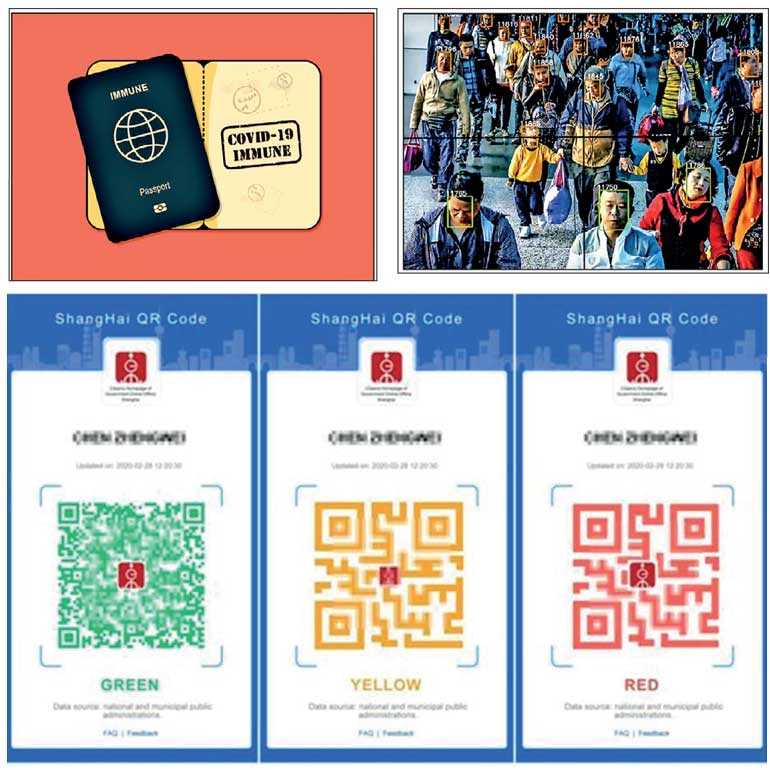
In my last post entitled “Reemerging from the COVID-19 Recession,” I explained that restoring normalcy in the long run relies on rallying technological innovation, and highlighted some of the regulatory frameworks that will enable it.
Realizing the importance of innovation, scientists, developers, engineers and policy makers across the world have put their heads together to come up with effective technological solutions to the problems posed by COVID-19 to society. Therefore, I decided to take some time to explore the technology behind some of these innovations and the extent of their effectiveness.
Despite the importance of vaccines and ventilators and the innovation taking place in these areas, I will focus on some of the more novel technological applications that haven’t been in the news as much.

Digital contact tracing
Contact tracing was first developed back in the 14th century as a public health strategy to mitigate the effects of the plague, and it continues to be one of the most useful tools at the onset of an infectious disease like COVID-19 that lacks a cure. The strategy aims to isolate the contagion by identifying all the people that might be carrying the disease and putting them in quarantine.
As I detailed in my post about the history of pandemics, contact tracing has been applied during almost every pandemic in the last millennium and it has proven to be effective against COVID-19. South Korea for example has become a role model in the global struggle against COVID-19 because of their successful, widespread contact tracing measures – and even Sri Lanka is far ahead of its South Asian peers, primarily due to its military’s thorough contact tracing efforts.
Despite the importance and proven effectiveness of contact tracing however, the contact tracing process employed against COVID-19 today would be very familiar even to a public health worker fighting the plague from over 700 years ago. Just like in the 14th century, most countries do their contact tracing by interviewing infected patients about the places and people they have interacted with in the recent past.
This model is neither scalable nor accurate because it relies primarily on memory and is disappointing in today’s information age. We have virtually all human knowledge and information at our fingertips – we have a fleet of thousands of vehicles in our pockets; and we can get anything we want be it physical or digital in a few hours – surely we can do better!
This train of thought has prompted innovators across the world to come up with a better contact tracing solution. Since over half of the world carries a smartphone in their pocket everywhere they go, most of these solutions revolve around tracking movement and interactions via smartphone apps.
Although GPS is the default location tracking technology used by most app developers, unfortunately it isn’t accurate enough for contact tracing. GPS doesn’t provide very accurate elevation information, and as a result it wouldn’t be very good at tracking human contact in a multi storey building for example. Moreover, using GPS to constantly track location would consume a lot of power and raise serious privacy concerns. Therefore, most digital contact tracing solutions have focused on using the Bluetooth Low Energy protocol – a less power intensive variant of the protocol used by wireless headphones and speakers.
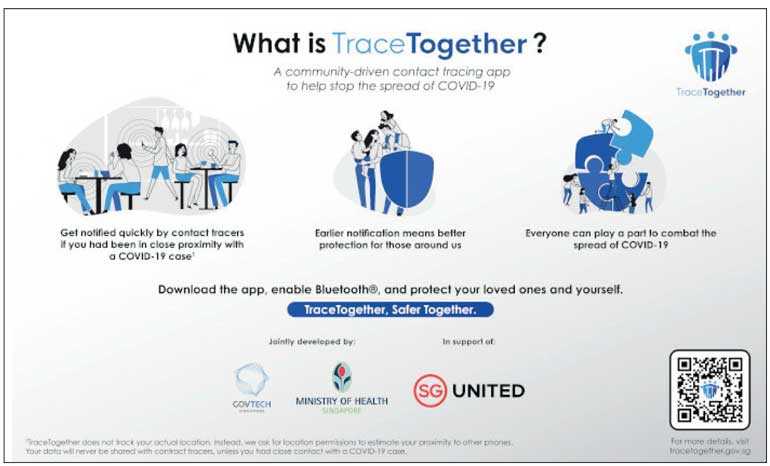
Singapore’s TraceTogether was the first major Bluetooth Low Energy powered digital contact tracing app and many nations across the world have built their own versions of the app based on Singapore’s open source project.
When a user signs up for apps like TraceTogether either their National Identity Card number or mobile phone number is used to generate an anonymized ID for the user. Thereafter, the app runs in the background transmitting this anonymized ID and logging the anonymized user IDs of other TraceTogether users nearby over the Bluetooth Low Energy protocol.
To ensure data privacy, the log of anonymized user IDs the user comes into contact with is encrypted and stored only on the user’s device. When a new COVID-19 patient is identified, his/her user ID is flagged on a centralized server. The TraceTogether app will then periodically cross check this list of flagged user IDs with its own log of IDs and alert its user to go into self-quarantine if a match is found.
Although the decentralized nature of apps like TraceTogether allows for scalable, privacy-oriented digital contact tracing, the apps haven’t been as successful as expected. This is primarily because these apps consume a lot of memory and drain batteries since they have to continuously run in the background.
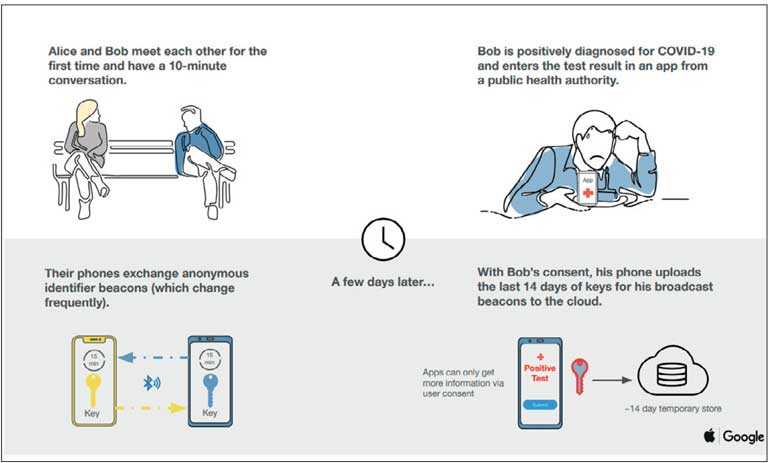
As a result, user adoption has been too low for the solution to be effective. In Singapore, only 25% of the population have downloaded the app, which is far below the 75% required for it to be effective. Moreover, since Apple and Google block Bluetooth access to apps running in the background, iOS, and Android users have to have the app running in the foreground the entire time for it to work.
To address these issues and privacy concerns over government data collection, Apple and Google have developed an API Application Programming Interface into Android and iOS so that governments can build their own contact tracing apps that are less resource intensive.
Contact tracing solutions maybe included with future operating system updates so that the user adoption problem can be avoided as well. Therefore, although digital contact tracing with Bluetooth Low Energy is a promising solution, I don’t think we will reap its rewards until the next pandemic we face since it hasn’t been rolled out at scale.
Moreover, the solution is not an option for most developing countries since they have low smartphone penetration levels.
Big data driven Immunity Passports
Most governments have had to macromanage the spread of COVID-19 by imposing widespread lockdowns for millions of people. Although this approach effectively curbs the spread of the virus, it isn’t a sustainable solution due to its major economic consequences.
Therefore, governments need to relax blanket restrictions and micromanage the problem by only enforcing movement restrictions on the groups of people that have a higher chance of contracting the virus. However, since many contagious COVID-19 patients are asymptomatic, doing so is a challenge because governments need to accurately identify who has COVID-19 and who doesn’t. China has solved this problem with big data driven Immunity passports. Since 2007, China has been building a mass surveillance system that aims to collect millions of data points about every individual and generate a unique social credit score for every one of them. The system is powered by almost 200 million facial recognition equipped CCTV cameras, telecommunications data and a treasure trove of data from Chinese mobile payment giants WeChat and AliPay.
Both WeChat and AliPay are apps that provide almost every digital service you can think of, from social media, to taxi-hailing to food delivery to e-commerce and digital payments. In fact, a majority of payments in China happen in the digital space through QR codes on AliPay and WeChat.
The two apps handle a transactions volume of almost $3 Trillion annually. As a result, both AliPay and WeChat generate massive amounts of data on every user and all of it is fed into the government’s social credit surveillance system.
With all this data in hand, China has been able to quickly develop Immunity passports using the same Machine Learning classification technology it uses for its social credit system. Both AliPay and WeChat have pushed a Health Code feature to their apps that generates a QR code that classifies the user’s risk of getting COVID-19 as Green, Yellow or Red after a simple Identity Card number entry.
Behind the scenes, the treasure trove of surveillance data tied to one’s ID card number is being fed into Machine Learning and Deep Learning models that do the classification. WeChat and AliPay have also included Bluetooth Low Energy contact tracing to gain more relevant data for this classification problem. When you want to enter a building, use public transport or do anything else that puts you in close contact with others, you have to first show that your Health code is green. If yellow or red, public health authorities will recommend either self-isolation or COVID-19 testing. The QR code is then scanned to log the user’s movement just like with a regular passport.
China’s big data powered Immunity passports have effectively allowed the country to safely reopen while preventing subsequent outbreaks of COVID-19. The only major concern is that the lack of any explanation for yellow and red classifications. This has led to frustration among the few that have been forced to self-isolate and forego economic activity due to a yellow or red classification.
Furthermore, although these Immunity passports have been effective in China, they are not an option in most liberal societies that value privacy and don’t openly collect data on their people at this scale. Moreover, just like with digital contact tracing, developing countries like Sri Lanka are left out due to low smartphone penetration. Nevertheless, even without smartphones, telco location data can be used to develop SMS or USSD based Immunity passports that classify mobile users based on their risk of contracting COVID-19.
Although this data will be less accurate than GPS because they are based on the cell tower mobile users are connect to, and the signal strength from their devices, if the classification models err on the side of false positives rather than false negatives they will still help governments loosen blanket restrictions more safely.
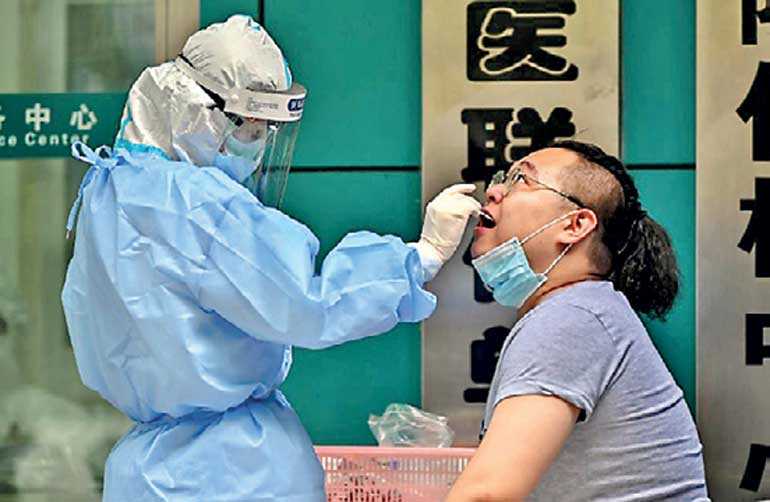
Machine Learning Powered COVID-19 Testing
Although Immunity passports like the system implemented in China can be effective with enough data, as mentioned above no other nation has access to the data needed to pull it off. Therefore, empirical COVID-19 testing will be the key to safely loosening movement restrictions.
However, most COVID-19 tests are expensive, slow and rather invasive since they require a swab from one’s nose and throat. To solve these problems, AliBaba has developed an image classification model that uses CT scans to detect COVID-19 with upto 96% accuracy.
Similar technology has been used in the past by Google’s DeepMind to diagnose brain tumors and diabetic retinopathy without needing a trained doctor. If you want to learn more about Machine Learning — the technology behind these innovations — read my post about it from 2018.
Researchers at Cambridge University and Carnegie Mellon University are applying the same technology to solve the problem in a different way. Instead of using CT scans, they are developing models that can diagnose COVID-19 using voice recordings of coughing and breathing.
These solutions are still at the data collection stage, but if successful they will increase accessibility to COVID-19 testing and add immense value to society. Anyone with a mobile phone could gain access to COVID-19 testing through this solution since all it requires is a microphone.
If successful, we may find ourselves in a future where we have to record our voice for a COVID-19 test just like we walk through metal detectors for security today.
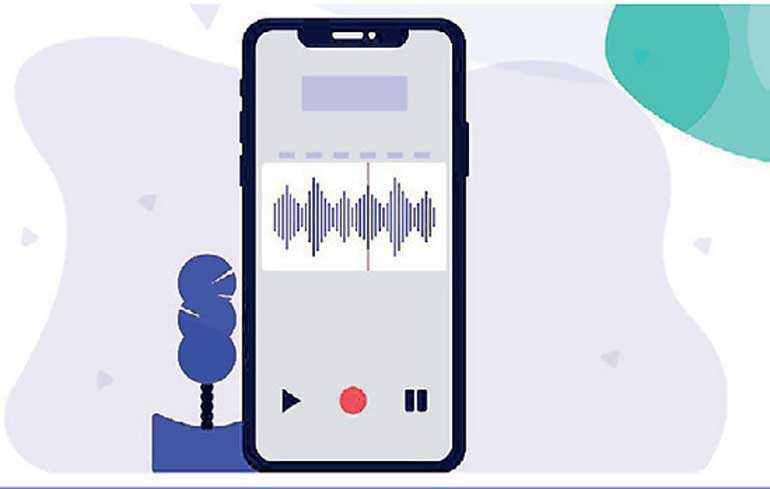
Increasing efficiency and safety in healthcare
Thus far, I have focused on innovations that can identify one’s risk of contracting COVID-19 and detect new cases of the disease. But equally important are the innovations in the healthcare space that will help us effectively treat patients after they are diagnosed. 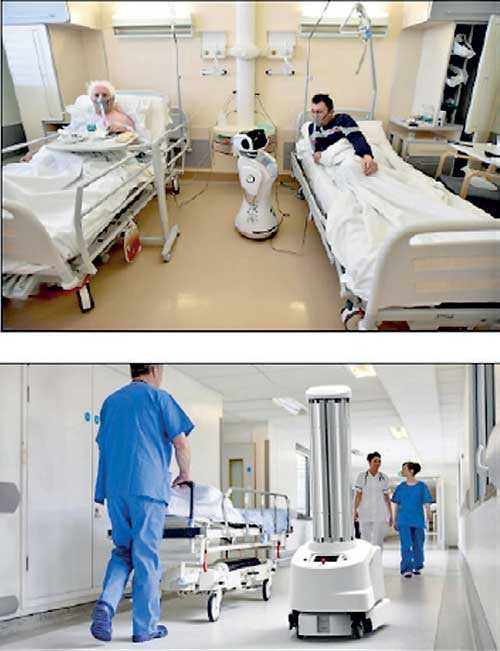
One such innovation developed by the National Health Service in the UK aims to better allocate healthcare resources by predicting future demand using Machine Learning. The NHS’s COVID-19 Capacity Planning and Analysis System(CPAS) uses public health data in order to predict the number of hospital beds, ventilators, and ICU beds that will be needed in a given region in the UK.
This information can save lives by allowing for better resource allocation and resource sharing between hospitals. A Canadian outbreak risk software company called BlueDot has already proven the effectiveness of Machine Learning powered outbreak prediction.
BlueDot’s models use foreign language news reports, animal and plant disease network data, social media content, airline data and a variety of other information in order to detect disease outbreaks as soon as possible and notify its clients. With COVID-19, their models beat both the World Health Organization and the US Center for Disease Control and Prevention to the punch by alerting customers of the pandemic on the 31st of December 2019.
Although predicting future cases may help, the sudden outbreaks of COVID-19 have also led to a scarcity of human resources in the healthcare sector be it doctors, nurses, or support staff. Moreover, vital human resources at hospitals are increasingly at risk of contracting the disease themselves.
Thousands of healthcare workers across the world have contracted the disease because of their proximity to it. To solve these problems, the robotics industry has developed numerous solutions to aide treatment processes at hospitals. Robots have been developed to disinfect hospitals, deliver food/medicine to patients, and even regularly check on patient vital signs like temperature.
At the same time, hardware and software telemedicine solutions are being adopted across the world in order to reduce contact between healthcare workers and patients. Boston Dynamics has converted one of its robots into a telemedicine solution by adding a screen so that doctors can communicate with their patients while controlling the robot. Similarly, even patients afflicted with other diseases are consulting their doctors via telemedicine apps and services due to a lack of access to healthcare. All of this may very well contribute to a democratization of healthcare through telemedicine in the post-pandemic world.
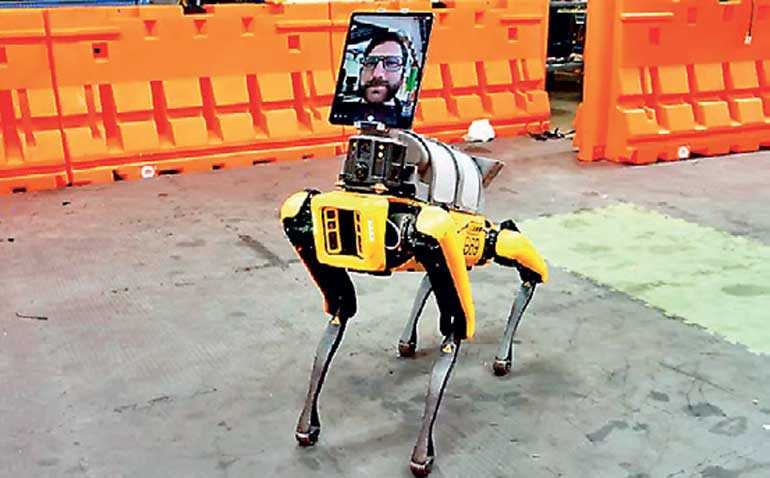
Evaluation is paramount
The innovation and creative application of technology we have seen in such a short amount of time, reveals the immense power of human ingenuity and creativity. Despite this however, it’s important to remember that most technological innovations that effectively solve problems usually come with their fair share of consequences and side effects.
Therefore, although we may be in a crisis that stresses the importance of speed, it’s vital that we understand the short and long term effects of these new technologies and ask governments and policy makers the right questions before they are implemented. After 9/11 for example, the horror of the crisis led to immediate implementation of new surveillance and security technologies.
Yet, these policies came at the cost of our privacy and freedom and they continue to violate these liberties almost two decades later. Clearly, even with the new innovations built to fight COVID-19, evaluation (and resistance if necessary) is paramount.